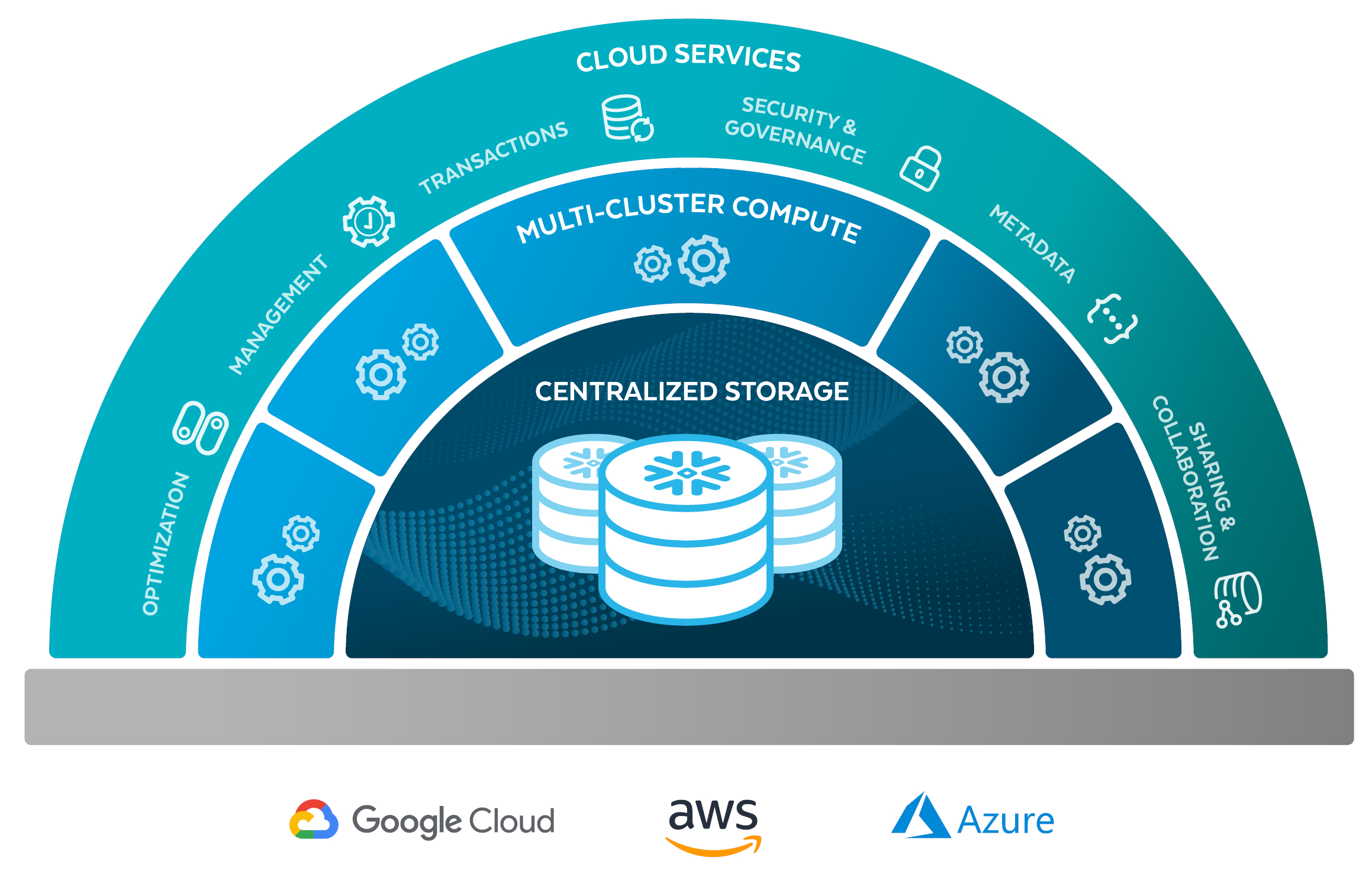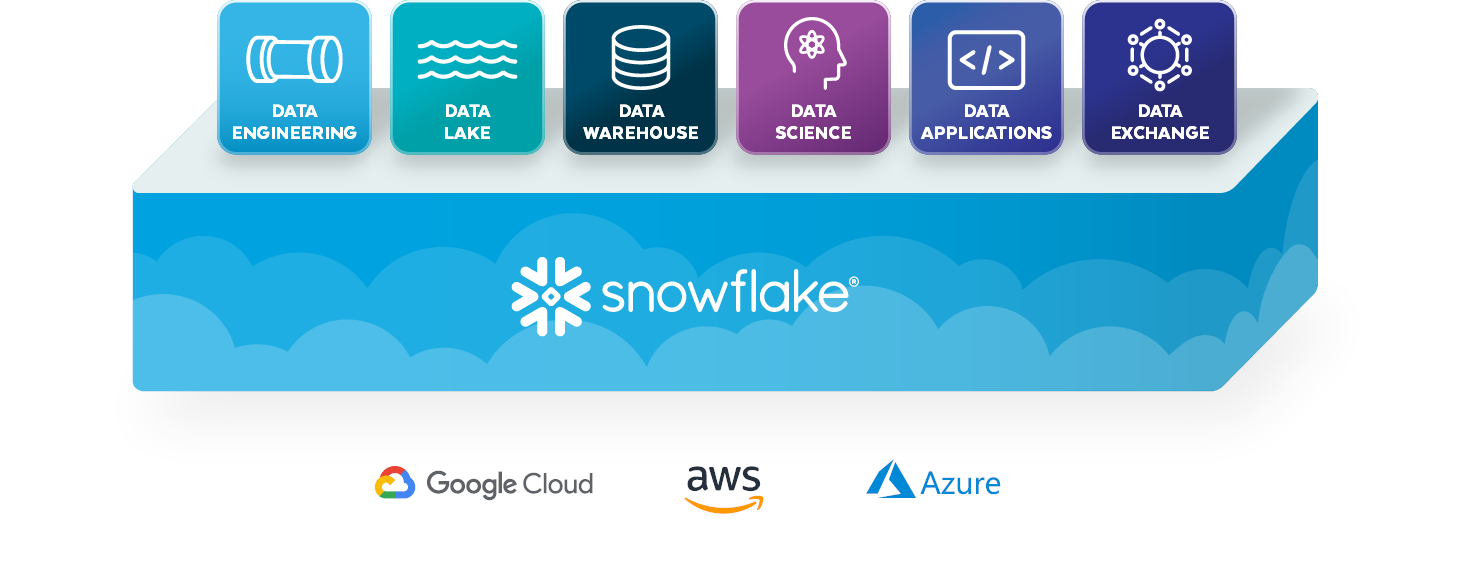Data exists everywhere but is often held hostage in silos by machines, applications, networks, and clouds. To access the value of this data, organizations are undergoing massive digital transformation initiatives, and data are driving operations for many modern enterprises.
Companies have invested billions of dollars in mobilizing data in disparate on-premises systems, infrastructure clouds, and application clouds. Yet, there are myriad challenges associated with legacy data solutions, and the data silo problem persists.
Many organizations have attempted to capture the value of data using solutions built on on-premises legacy databases or big data architectures. Legacy database architectures have inherent scalability and capacity constraints and were not initially designed to adopt cloud-based workloads.
These shortcomings have resulted in data silos, governance challenges, and limited business insights. Big data architectures have attempted to solve the problem of data silos with large pools of cost-effective storage. In doing so, have often created data integrity and governance challenges.
In recent years, cloud-based companies, including specific public cloud providers, have introduced solutions derived from legacy databases and big data architectures. Despite being deployed in the public cloud, these solutions generally have the same limitations due to weaknesses in the underlying architectures.
With ~50% of Fortune 500 companies as customers, Snowflake believes the Data Cloud can enable a world without data silos, allowing organizations to discover, access, derive insights from, and share data from various sources effortlessly. How?
As strategy enthusiasts, we decided to evaluate the business model of Snowflake and learn how Snowflake works and makes money. What is the growth strategy of Snowflake? Let’s find out.
What is Snowflake? How does Snowflake work?
Snowflake, founded in 2012, is a cloud computing–based data cloud company that offers a cloud-based data storage and analytics service, generally termed “data-as-a-service.”
Snowflake allows corporate users to store and analyze data using cloud-based hardware and software. The main features of Snowflake are separation of storage and compute, on-the-fly scalable compute, data sharing, data cloning, and third-party tools support to handle the demanding needs of growing enterprises.
Snowflake works on Amazon S3, Microsoft Azure, and the Google Cloud Platform. Snowflake was ranked first on the Forbes Cloud 100 in 2020. Snowflake went public in 2020 and raised $3.4 billion, one of the world’s largest software IPOs.
Snowflake believes in a data-connected world where organizations have seamless access to explore, share, and unlock the value of data. To realize this vision, Snowflake is pioneering the Data Cloud. In this ecosystem, Snowflake customers, partners, and data providers can break down data silos and derive value from rapidly growing data sets in secure, governed, and compliant ways.
Snowflake works as a Cloud Data Platform that enables customers to consolidate data into a single source of truth to drive meaningful business insights, build data-driven applications, and share data. Snowflake delivers the platform through a customer-centric, consumption-based business model, only charging customers for the resources they use.
Customers can share and provide access to each other’s data, augment data science and machine learning algorithms with more data sets, connect global supply chains through data hubs, and create new monetization channels by connecting data providers and consumers.
Snowflake’s platform solves the decades-old problem of data silos and data governance. Snowflake enables customers to unify and query data to support a wide variety of use cases by leveraging the elasticity and performance of the public cloud. It also provides data access so users can securely share data inside and outside their organizations, generally without copying or moving the underlying data.
As a result, customers can blend existing data with new data for a broader context, augment data science efforts, or create new monetization streams. Snowflake lets customers focus on deriving value from their data rather than managing infrastructure. What does the architecture of Snowflake’s cloud platform look like?
Snowflake’s Cloud Data Platform was built from the ground up to take advantage of the cloud and is built on an innovative multi-cluster, shared data architecture. It consists of three independently scalable layers deployed and connected globally across public clouds and regions:
- Centralized storage: The storage layer is based on scalable cloud storage and can manage structured and semi-structured data. The stored data is automatically partitioned, and metadata is extracted during loading to enable efficient processing.
- Multi-cluster computes: The compute layer is designed to capitalize on the instant elasticity and performance of the public cloud. Compute clusters can be spun up and down easily within seconds, enabling Snowflake to retrieve the optimal data required from the storage layer to answer queries and transform data with optimized price performance.
- Cloud services: The cloud services layer of Snowflake acts as the brain of the platform, ensuring the different components work in unison to deliver a consistent, user-friendly customer experience.

Snowflake supports many workloads that enable customers’ most critical business objectives, including data warehousing, data lakes, data engineering, data science, data application development, and data sharing.
Snowflake has an industry-vertical focus, which allows it to go to market with tailored business solutions. These Data Clouds combine Snowflake’s platform capabilities with industry-specific partner solutions and datasets to drive business growth and deliver improved experiences and insights.
Snowflake is used by organizations across a broad range of industries. As of 2022, Snowflake had 5,944 total customers who processed an average of over 1,496 million daily queries in Jan ’22.

What is the business model of Snowflake? How does Snowflake make money?
Value Proposition
Transform into data-driven businesses: Snowflake eliminates data silos, empowers secure and governed access to data, and removes data management and infrastructure complexities. This enables organizations to drive significant insights, improve products and services, and pursue new business opportunities.
Data consolidation into a single source of truth: Snowflake simplifies customers’ data infrastructure by centralizing data in an analytics-ready format. As a result, organizations can deliver secure, fast, and accurate decision-making.
Increase agility and augment insights: Snowflake allows customers to share and consume live data across their organizations seamlessly and with their partners, customers, and suppliers, without moving the underlying data.
New monetization streams and data-driven applications: Snowflake allows customers to unlock previously untapped monetization streams and create new data-driven applications. This enables organizations to better reach, engage, and retain their end customers.
Reduced time spent managing infrastructure: Snowflake customers can focus on driving immediate value from their data rather than managing complex and expensive infrastructure.
Secured data access: Snowflake allows customers to share their data inside their organizations, as well as with their partners, customers, and suppliers, to unlock new insights.
Empowering Business Model & Marketing Strategy of Salesforce
Growth Strategy of Snowflake
The business and growth strategy of Snowflake includes:
- New Customer Acquisition: Snowflake believes that nearly all organizations will eventually embrace a cloud strategy and that the opportunity to continue growing its customer base, particularly with larger organizations and organizations with vast amounts of data, is substantial.
- Increased usage within the existing customer base: As customers realize the benefits of Snowflake, they typically increase their platform consumption by processing, storing, and sharing more data, which leads to scale and operating leverage in Snowflake’s business model.
- Expand data content and data sharing: Snowflake provides a way for organizations to share, collaborate, and connect with data, including through the Data Marketplace. Hence Snowflake wishes to add new customers, partners, data providers, and data consumers to connect on Snowflake and to drive market awareness of the Data Cloud.
How does Palantir make money: Business Model & Competitor Analysis
Sales & Marketing
Snowflake’s sales & marketing strategy primarily focuses on new customer acquisitions and driving increased usage of Snowflake by existing customers.
Snowflake engages at every level of an organization, including data analysts and data engineers through its self-service model and senior executives through its direct sales team.
Many organizations initially adopt Snowflake through a self-service trial on its website. Snowflake deploys a range of marketing strategies to drive traffic to its website and usage of Snowflake.
Network Effects
The business model of Snowflake benefits from powerful network effects, which create accelerating demand for Snowflake. Snowflake allows its customers to unify third-party data sets with their internal data to analyze and measure the impact of events on their business operations, sales, and supply chains to make data-driven decisions in near real time.
The more customers adopt Snowflake, the more they can share data with, or receive data from, other Snowflake customers, partners, and data providers, enhancing the value of the insights delivered by Snowflake for all users.
Snowflake demonstrates how data added to the Data Cloud by one organization can benefit all the customers in the ecosystem. As more data is migrated to the Data Cloud, customers are expected to consume and exchange more data, creating a powerful network effect.
Hybrid Business Strategy of IBM
How does Snowflake make money?
Snowflake made $1.2 billion in 2021, a 105% growth from 2021. Snowflake primarily makes money (94%) from fees charged to customers based on the storage, computing, and data transfer resources consumed on Snowflake’s cloud platform as a single, integrated offering in a capacity arrangement. Hence customers only pay for what they use.
Under capacity arrangements, Snowflake charges customers annually in advance of their consumption. If customers consume Snowflake’s platform over their capacity commitments or continue to use it after expiration, they are charged for their incremental consumption.
- For storage resources, consumption for a given customer is based on the average terabytes per month of all of such customer’s data stored in its platform.
- For compute resources, consumption is based on the compute resource used, the duration of use, or the volume of data processed for some features.
- For data transfer resources, consumption is based on terabytes of data transferred, the public cloud provider used, and the region to and from which the transfer is executed.
Snowflake also makes money by providing professional services, primarily consulting, on-site technical solution services, and training related to its platform. Other revenue consists mainly of fees from customer training delivered on-site or through publicly available classes.
















